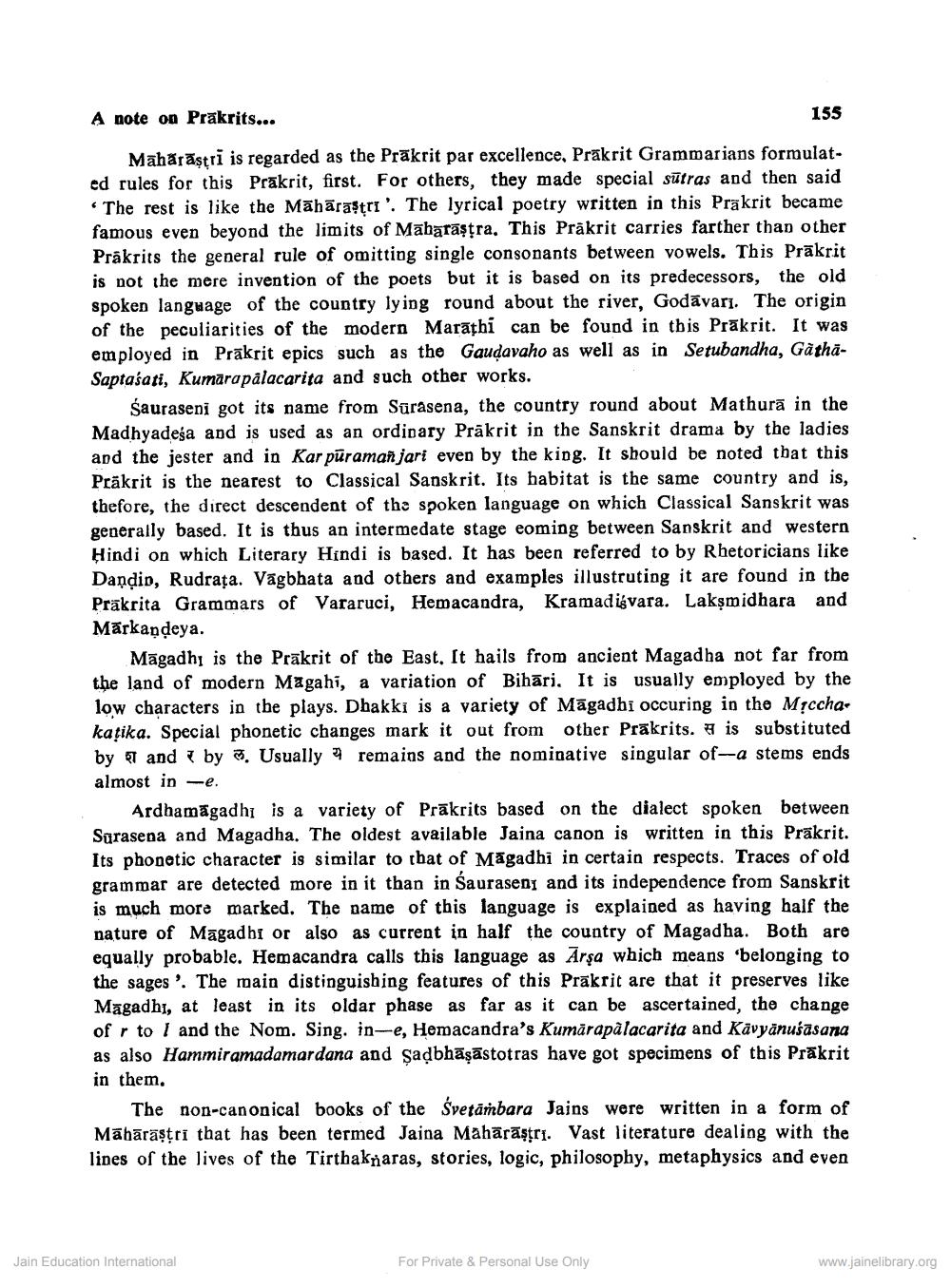________________
A note on Prakrits...
155
Mahārāştri is regarded as the Prākrit par excellence, Prakrit Grammarians formulated rules for this Prakrit, first. For others, they made special sūtras and then said . The rest is like the Māhārastri'. The lyrical poetry written in this Prakrit became famous even beyond the limits of Maharāşțra. This Prakrit carries farther than other Prakrits the general rule of omitting single consonants between vowels. This Prākrit is not the mere invention of the poets but it is based on its predecessors, the old spoken language of the country lying round about the river, Godāvari. The origin of the peculiarities of the modern Marathi can be found in this Prakrit. It was employed in Prakrit epics such as the Gaudavaho as well as in Setubandha, GàthaSaptašati, Kumarapalacarita and such other works.
Śauraseni got its name from Sūrasena, the country round about Mathurā in the Madhyadeśa and is used as an ordinary Prākrit in the Sanskrit drama by the ladies and the jester and in Kar püraman jari even by the king. It should be noted that this Prākrit is the nearest to Classical Sanskrit. Its habitat is the same country and is, thefore, the direct descendent of the spoken language on which Classical Sanskrit was generally based. It is thus an intermedate stage eoming between Sanskrit and western Hindi on which Literary Hindi is based. It has been referred to by Rhetoricians like Dandip, Rudrata. Vägbhata and others and examples illustruting it are found in the Prākrita Grammars of Vararuci, Hemacandra, Kramadisvara. Lakşmidhara and Mārkaņdeya.
Magadh, is the Prākrit of the East. It hails from ancient Magadha not far from the land of modern Magahi, a variation of Bihāri. It is usually employed by the low characters in the plays. Dhakki is a variety of Māgadhi occuring in the Mịcchakatika. Special phonetic changes mark it out from other Prakrits. # is substituted by 7 and 7 by %. Usually remains and the nominative singular of--a stems ends almost in -e.
Ardhamāgadhi is a variety of Prākrits based on the dialect spoken between Sqrasena and Magadha. The oldest available Jaina canon is written in this Prakrit. Its phonetic character is similar to that of Māgadhi in certain respects. Traces of old grammar are detected more in it than in Sauraseny and its independence from Sanskrit is much more marked. The name of this language is explained as having half the nature of Magadbi or also as current in half the country of Magadha. Both are equally probable. Hemacandra calls this language as Arşa which means 'belonging to the sages'. The main distinguishing features of this Prakrit are that it preserves like Magadhi, at least in its oldar phase as far as it can be ascertained, the change of r to l and the Nom. Sing, in-e, Hemacandra's Kumārapālacarita and Kavyānušāsana as also Hammiramadamardana and sadbhāṣāstotras have got specimens of this Prākrit in them.
The non-canonical books of the Svetambara Jains were written in a form of Mābāräștri that has been termed Jaina Mahārāștri. Vast literature dealing with the lines of the lives of the Tirthakraras, stories, logic, philosophy, metaphysics and even
Jain Education International
For Private & Personal Use Only
www.jainelibrary.org




